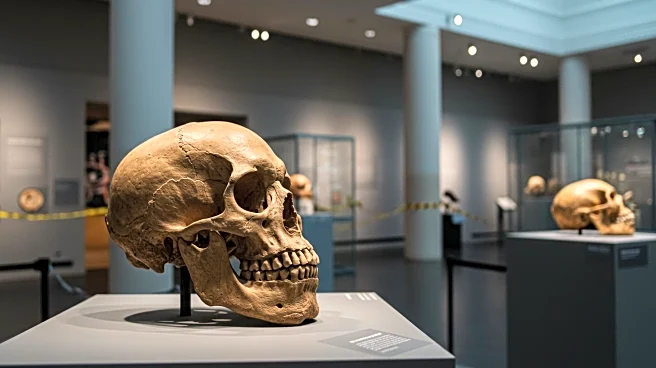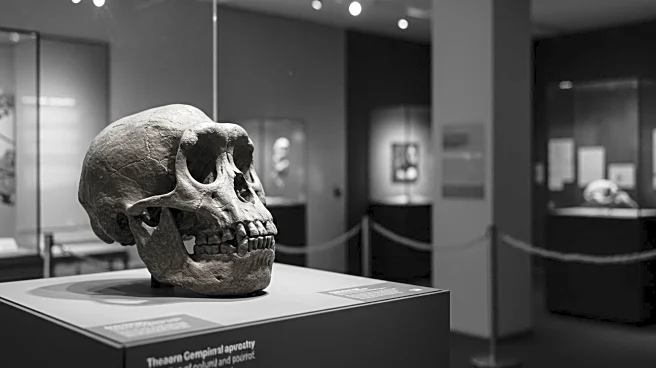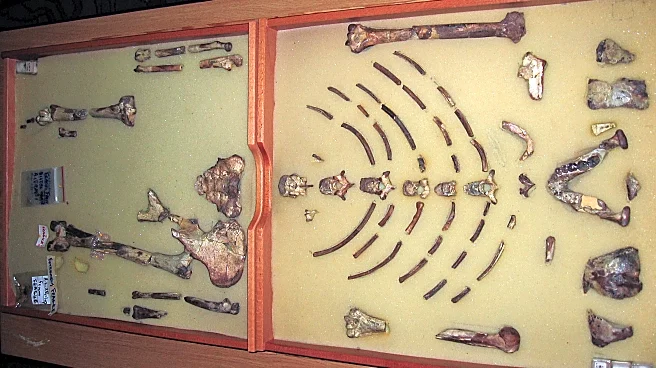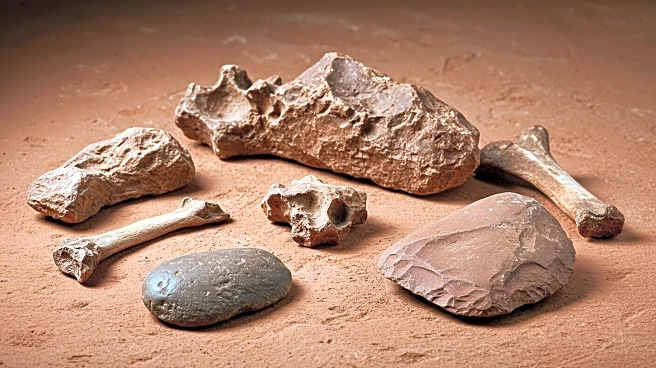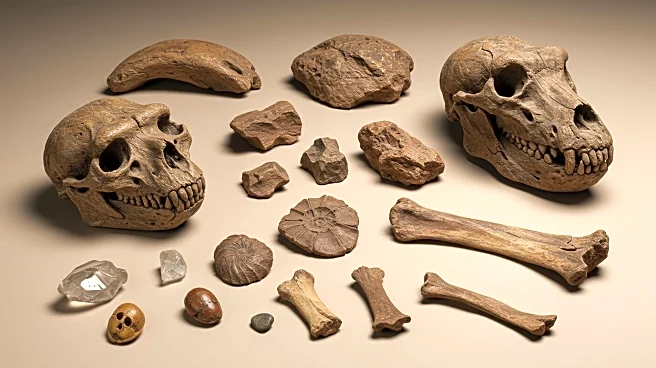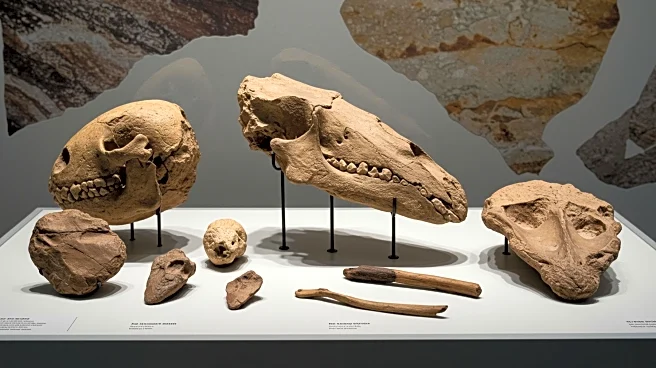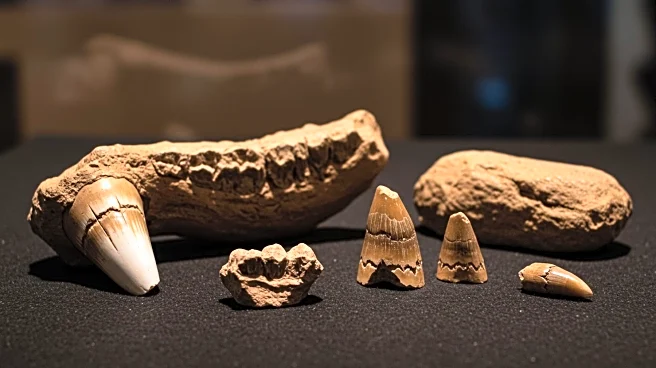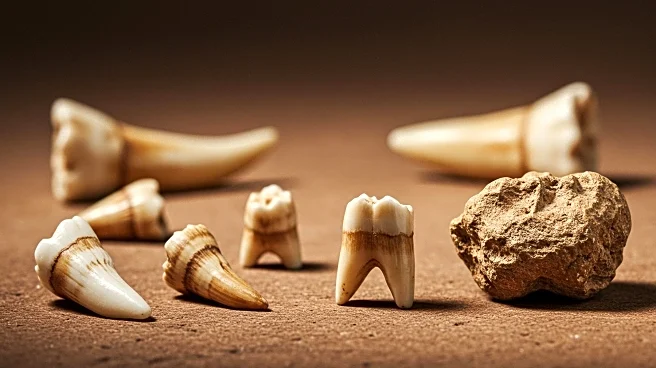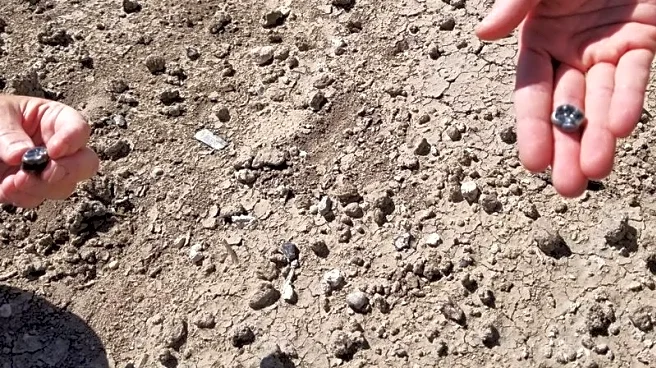What's Happening?
The fossil of Lucy, a significant human ancestor, has been transported from Ethiopia to the Czech National Museum in Prague for a two-month exhibition. Lucy, a member of the Australopithecus afarensis species, was discovered in Ethiopia in 1974 and is considered a crucial piece of human evolutionary history. This marks the second time Lucy has left Ethiopia, the first being a tour in the United States in 2013. The exhibition will also feature Selam, another Australopithecus fossil discovered in the same region. While the exhibition is seen as an opportunity for global audiences to engage with human history, concerns have been raised about the safety and preservation of Lucy's fragile bones during transportation and exposure to different climate conditions.
Why It's Important?
The exhibition of Lucy in Europe is significant as it allows a broader audience to connect with a pivotal piece of human history, potentially enhancing global understanding of human evolution. However, the transportation of such a delicate artifact raises concerns about its preservation, highlighting the challenges of balancing public access with conservation. The event also underscores issues of cultural heritage and ownership, as some Ethiopians feel excluded from the narrative surrounding their national treasures. This situation reflects broader debates about the management and display of cultural artifacts, particularly those with global scientific importance.
What's Next?
The exhibition in Prague is expected to draw significant attention from both the public and the scientific community. It may prompt discussions on the protocols for transporting and displaying fragile historical artifacts. Additionally, the Ethiopian government and cultural institutions might face pressure to improve transparency and public engagement regarding the handling of national heritage items. The outcome of Lucy's exhibition could influence future decisions on international loans of similar artifacts.
Beyond the Headlines
The quiet departure of Lucy from Ethiopia raises questions about the transparency of government actions concerning national heritage. This incident may lead to increased scrutiny of how cultural artifacts are managed and shared with the international community. It also highlights the potential for cultural diplomacy, as such exhibitions can foster international goodwill and collaboration in scientific research.
